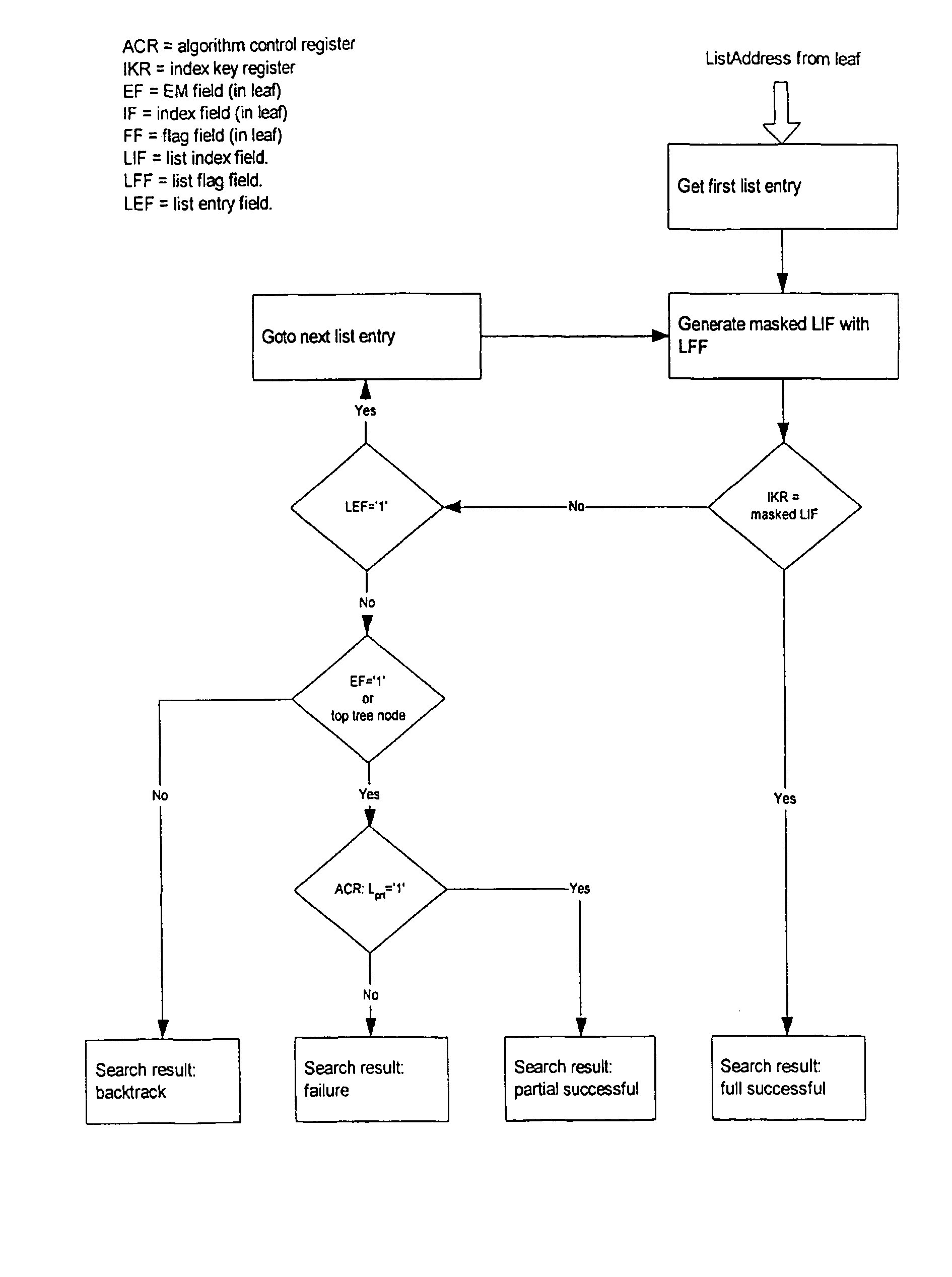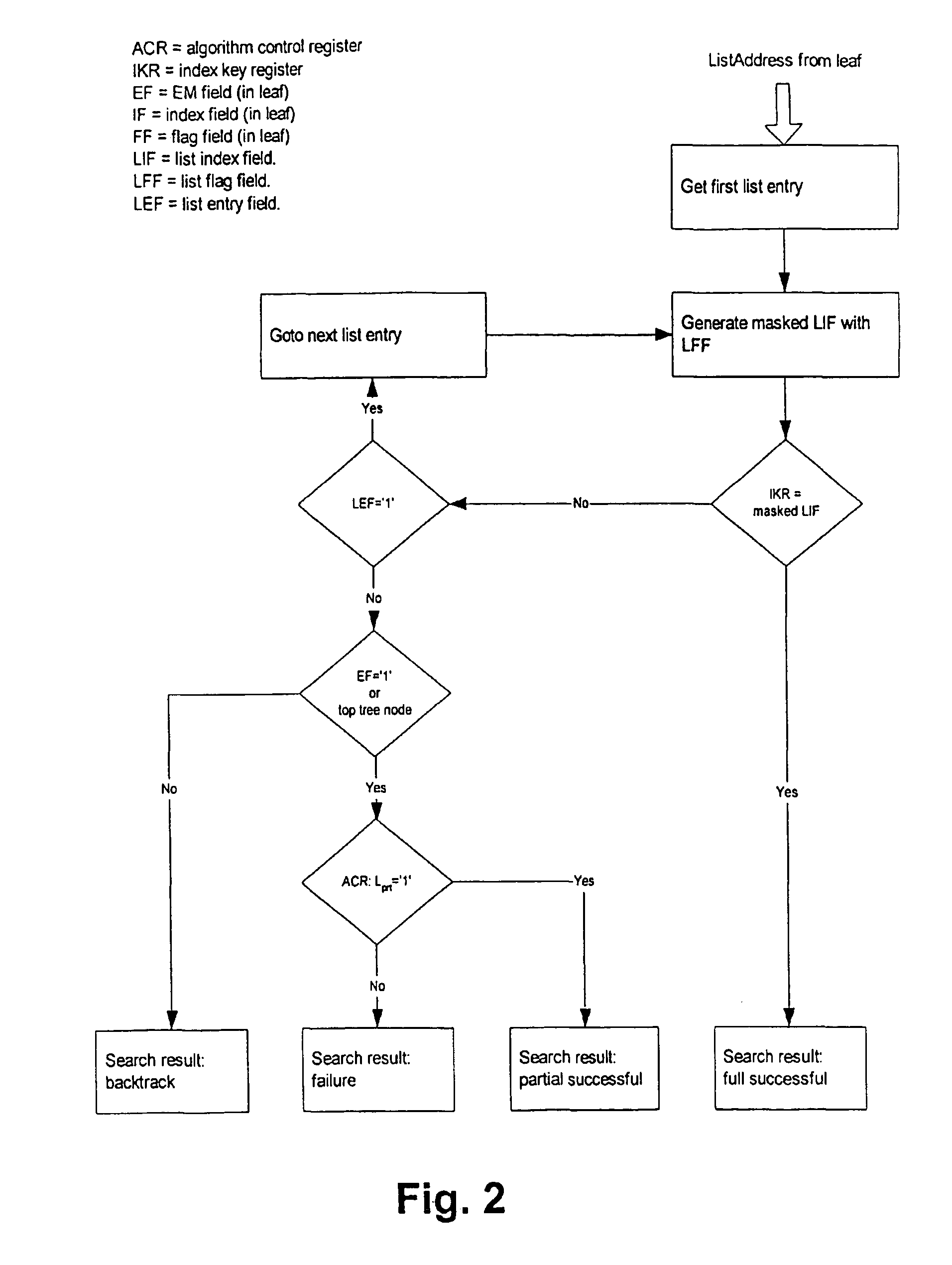Method and system for classifying binary strings
a binary string and classification technology, applied in the field of methods and systems for classification of binary strings, can solve the problems of increasing congestion and packet loss at intermediate routers, routing lookup bottlenecks in routers, and failing to keep up with the pace of the pace of the pace of the pace of the pace of the pace of the pace of the pace of the pace of the pace of the pace of the pace of the pace of the pace of the pace of the pace of the pace of the pace of the pace of the pace of the pa
- Summary
- Abstract
- Description
- Claims
- Application Information
AI Technical Summary
Benefits of technology
Problems solved by technology
Method used
Image
Examples
Embodiment Construction
[0034]The preferred embodiment of the present invention will now be described based on a classification example which may be implemented e.g. in the forwarding path of an IP router, as shown in FIG. 1. In this example, each of Nfld classification fields (e.g. Nfld=5 in case of simple IP packet classification) are searched for in the appropriate tree of each field, either by an exact or range match (protocol, ports) or longest prefix match. A Range Match (RM) is a match of a bit string on a number of contiguous, ordered bitstrings. E.g. let the range R1 be defined as 10-18 (decimal), there are no other ranges defined that are overlapping ranges such as 10-12. A possible search procedure for a RM is an LPM without backtracking. Each matching procedure for the field value s ends in a leaf Sn (s is member of set sn, sεsn) with an index ind(sn) of Bind bit.
[0035]As described in the IETF specification RFC 1633, an IP router may have two broad functional divisions: the forwarding path and ...
PUM
 Login to View More
Login to View More Abstract
Description
Claims
Application Information
 Login to View More
Login to View More - R&D
- Intellectual Property
- Life Sciences
- Materials
- Tech Scout
- Unparalleled Data Quality
- Higher Quality Content
- 60% Fewer Hallucinations
Browse by: Latest US Patents, China's latest patents, Technical Efficacy Thesaurus, Application Domain, Technology Topic, Popular Technical Reports.
© 2025 PatSnap. All rights reserved.Legal|Privacy policy|Modern Slavery Act Transparency Statement|Sitemap|About US| Contact US: help@patsnap.com



